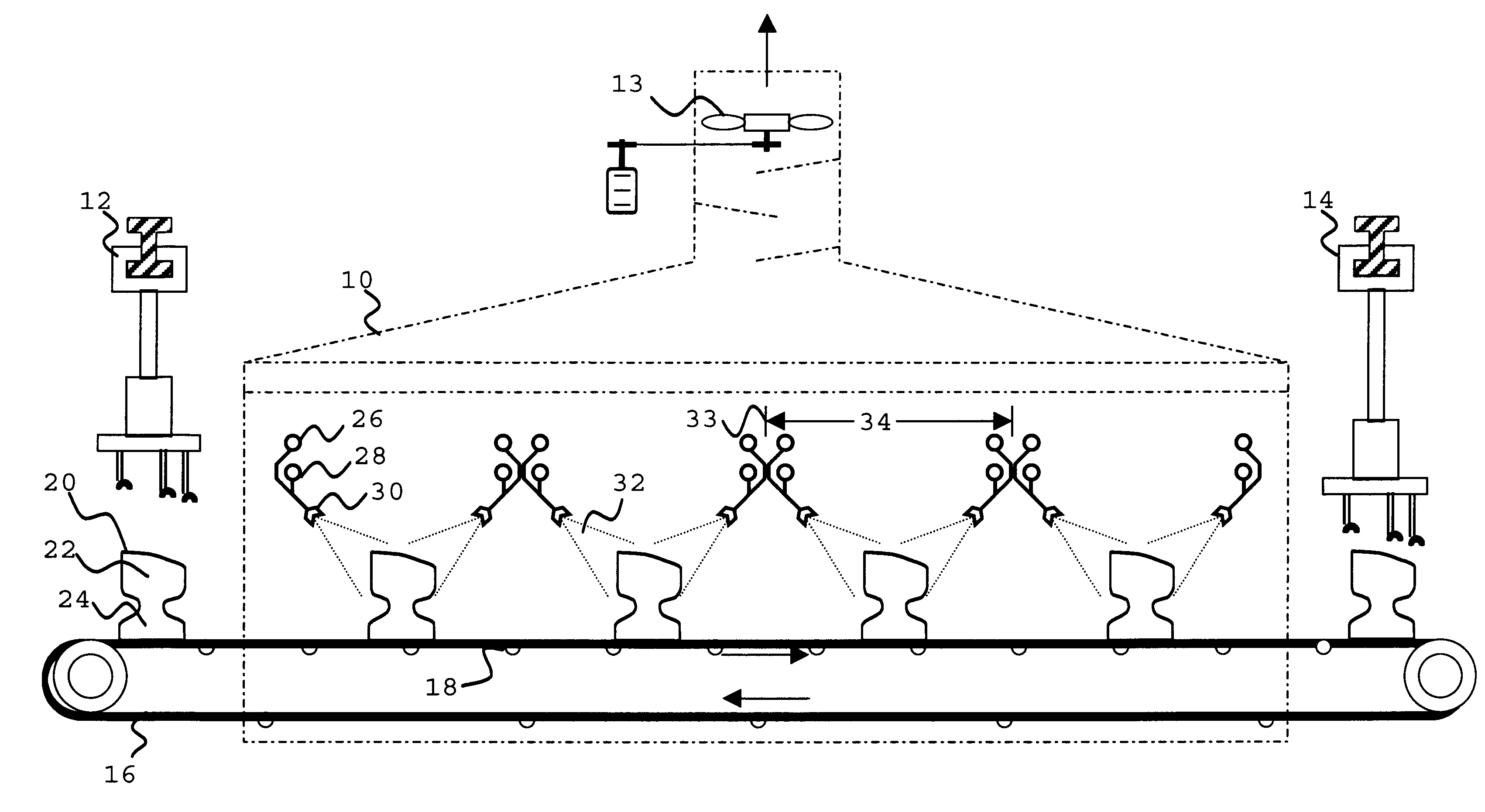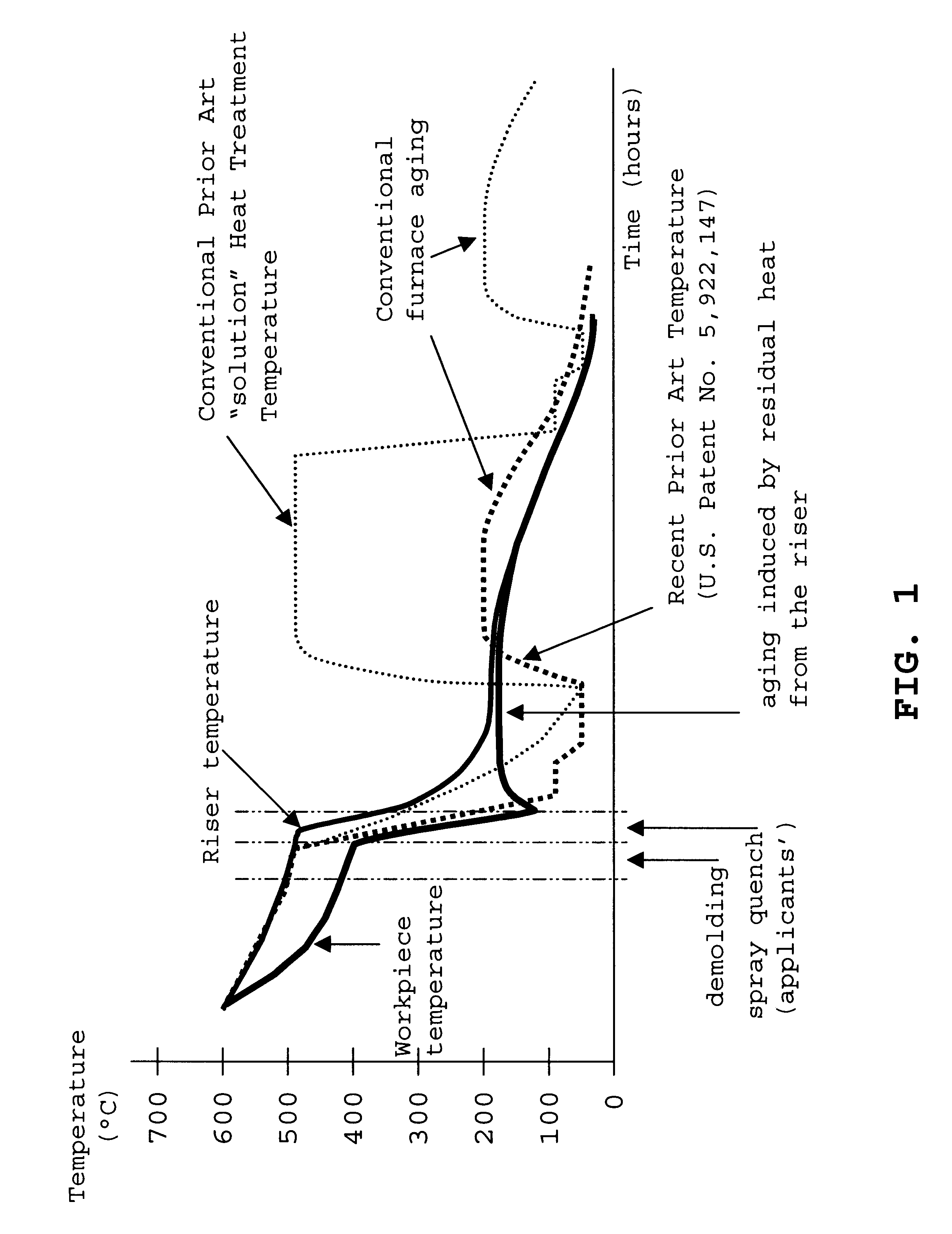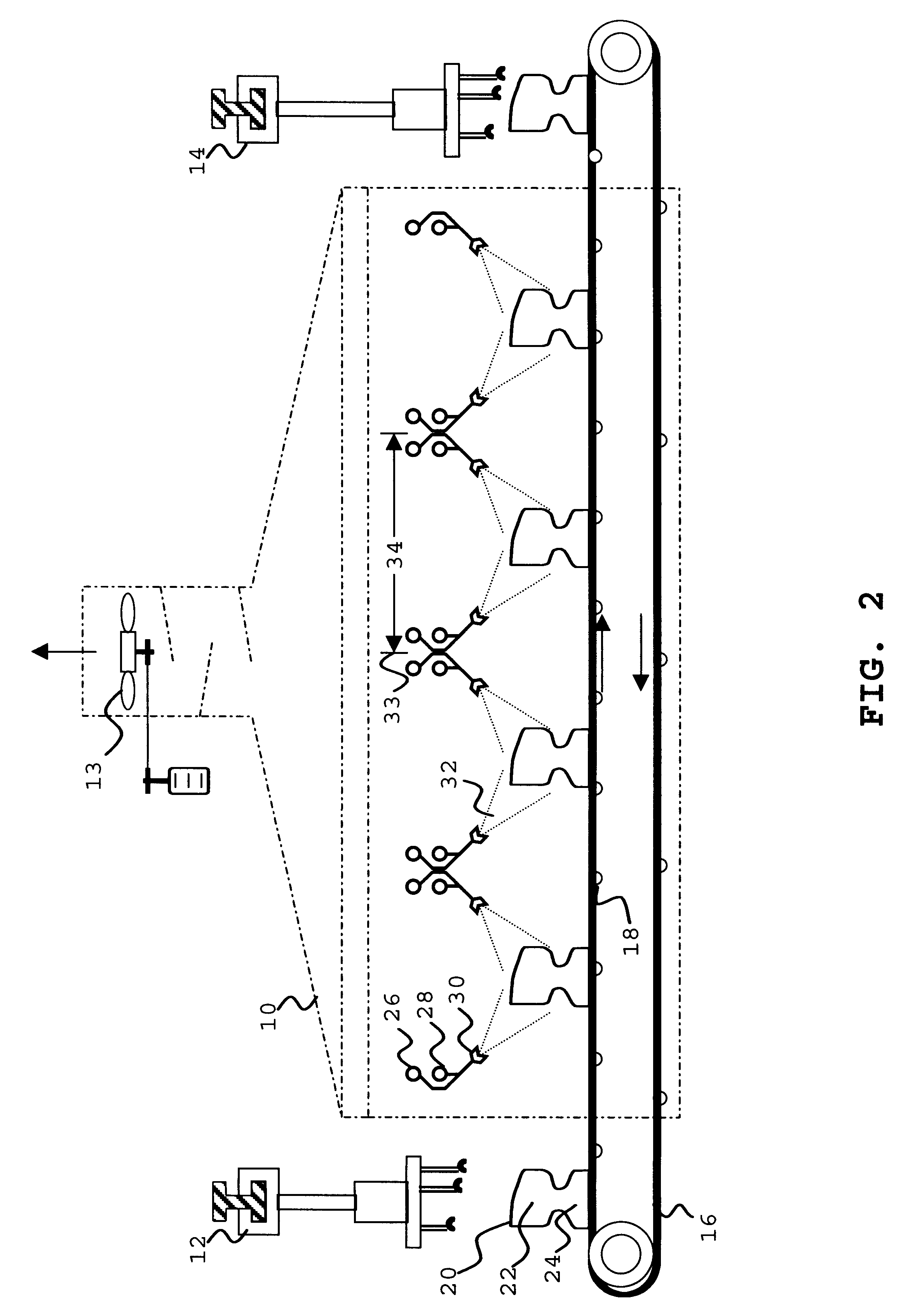Method and apparatus for simplified production of heat treatable aluminum alloy castings with artificial self-aging
a technology of aluminum alloy castings and self-aging, applied in the field of methods, can solve the problems of not teaching or suggesting a method capable of eliminating also the aging furnace, the tendency of the different elements to be segregated, and the inability to eliminate the aging furnace, so as to achieve the effect of reducing capital, reducing the amount of capital, and simplifying the overall heat treatmen
- Summary
- Abstract
- Description
- Claims
- Application Information
AI Technical Summary
Benefits of technology
Problems solved by technology
Method used
Image
Examples
Embodiment Construction
.
FIG. 1 is a graph showing the different temperature paths vs. time of various castings; with the prior art processes in dotted lines and the present invention in continuous lines. Nowadays, the most common practice of the prior art (shown in the graph by the thinner dotted line) includes, after demolding, the steps of subjecting the casting to: natural cooling, reheating and maintaining in a solution heat furnace, quenching, and reheating and maintaining in an aging furnace. Another illustrated prior art temperature path (shown by the bold dotted line) is the heat treatment disclosed in applicant' own very recent U.S. Pat. No. 5,922,147 (wherein the solution treatment is omitted entirely, with the quenching of the casting occurring without natural cooling after demolding, and preferably immediately).
Also shown in the graph in FIG. 1, are the casting temperature paths of the workpiece portion and of the riser portion according to the present invention (shown in respective continuous...
PUM
| Property | Measurement | Unit |
|---|---|---|
| temperature | aaaaa | aaaaa |
| temperature | aaaaa | aaaaa |
| temperature | aaaaa | aaaaa |
Abstract
Description
Claims
Application Information
 Login to View More
Login to View More - R&D
- Intellectual Property
- Life Sciences
- Materials
- Tech Scout
- Unparalleled Data Quality
- Higher Quality Content
- 60% Fewer Hallucinations
Browse by: Latest US Patents, China's latest patents, Technical Efficacy Thesaurus, Application Domain, Technology Topic, Popular Technical Reports.
© 2025 PatSnap. All rights reserved.Legal|Privacy policy|Modern Slavery Act Transparency Statement|Sitemap|About US| Contact US: help@patsnap.com



